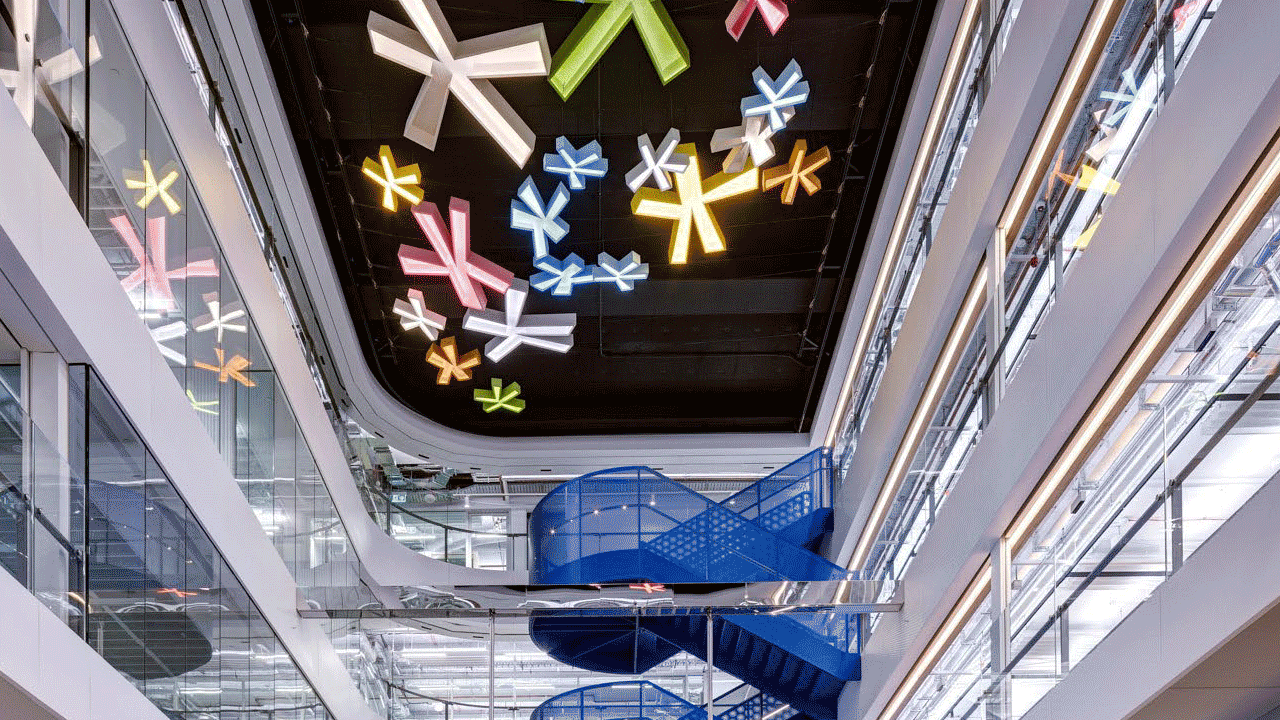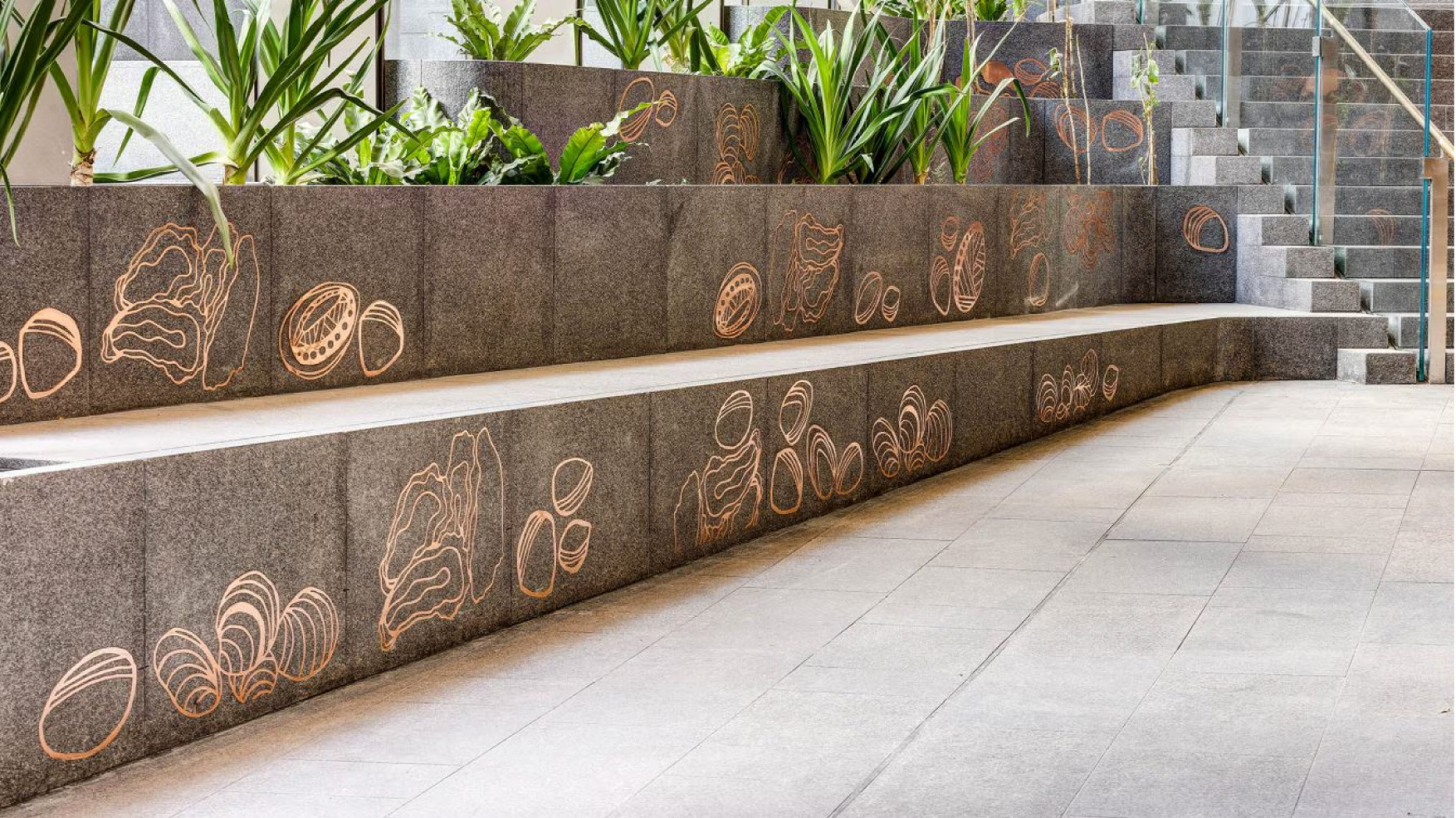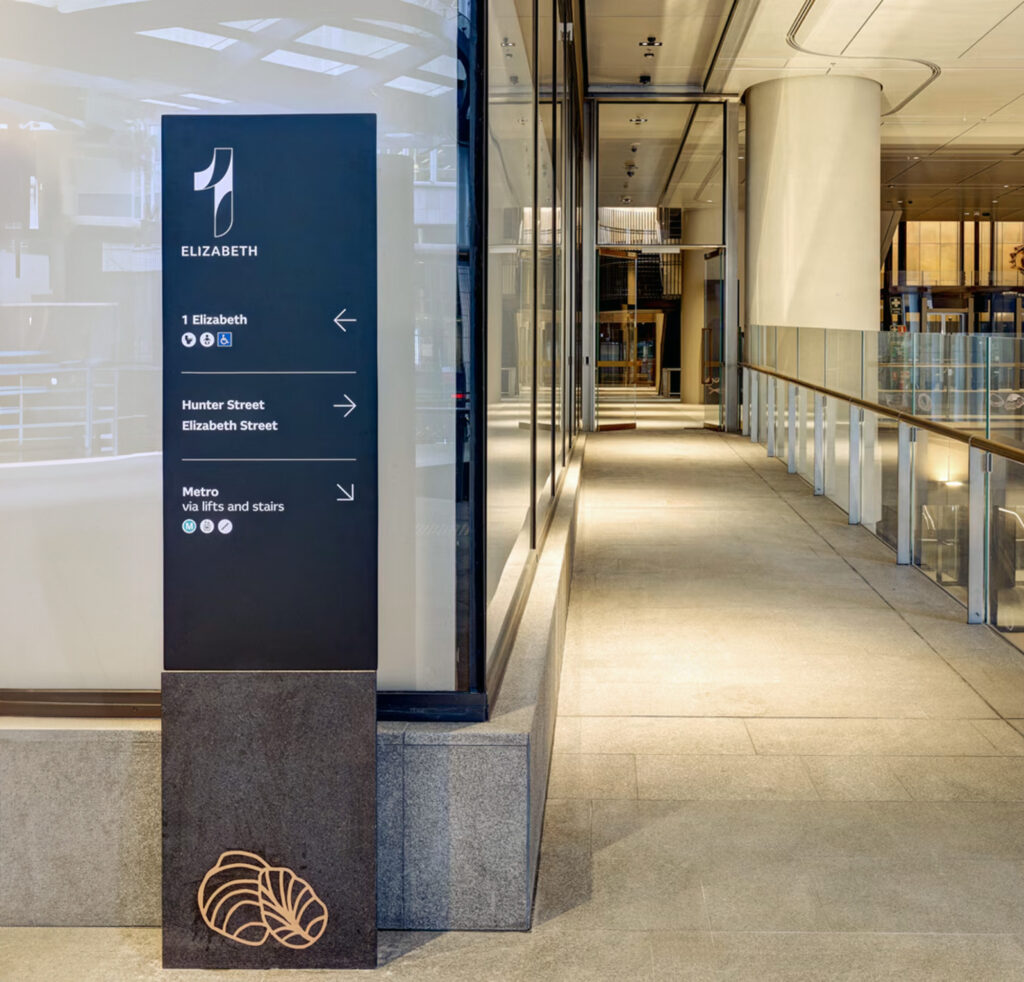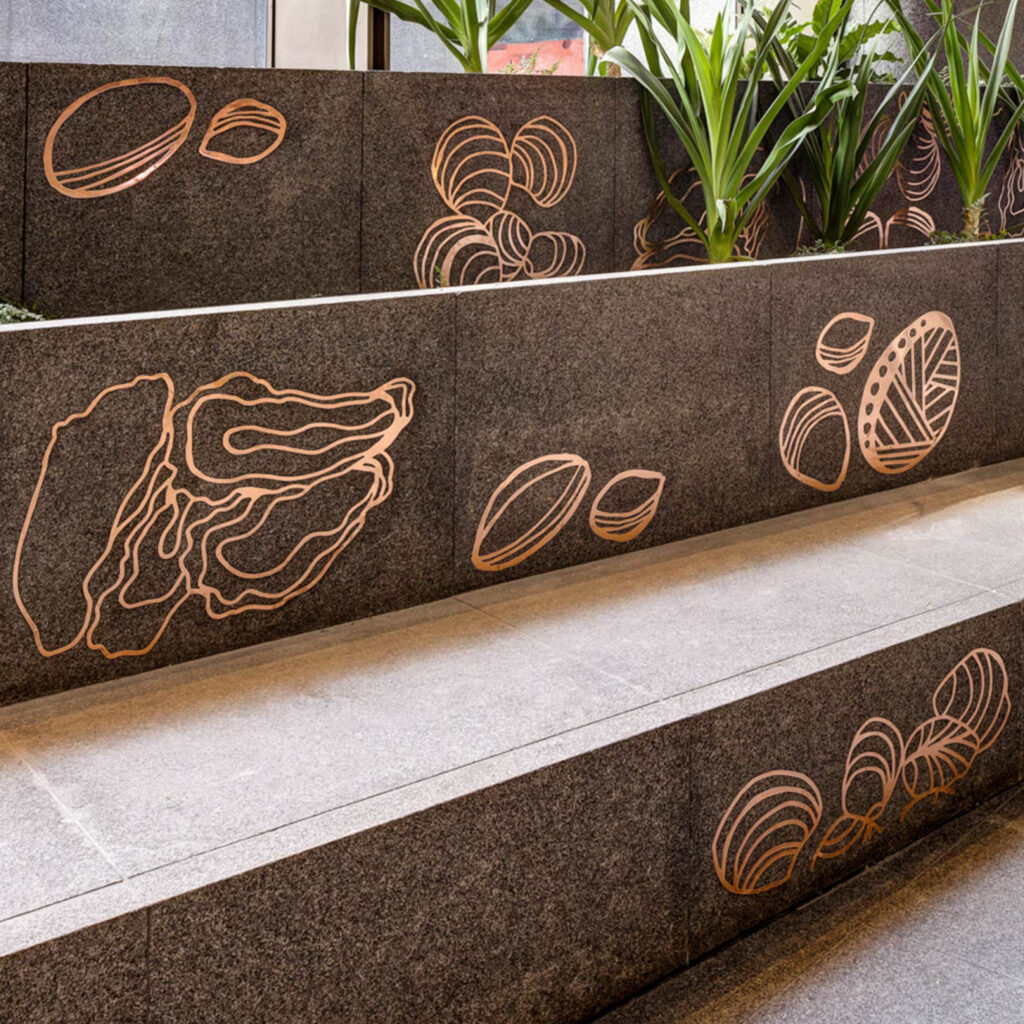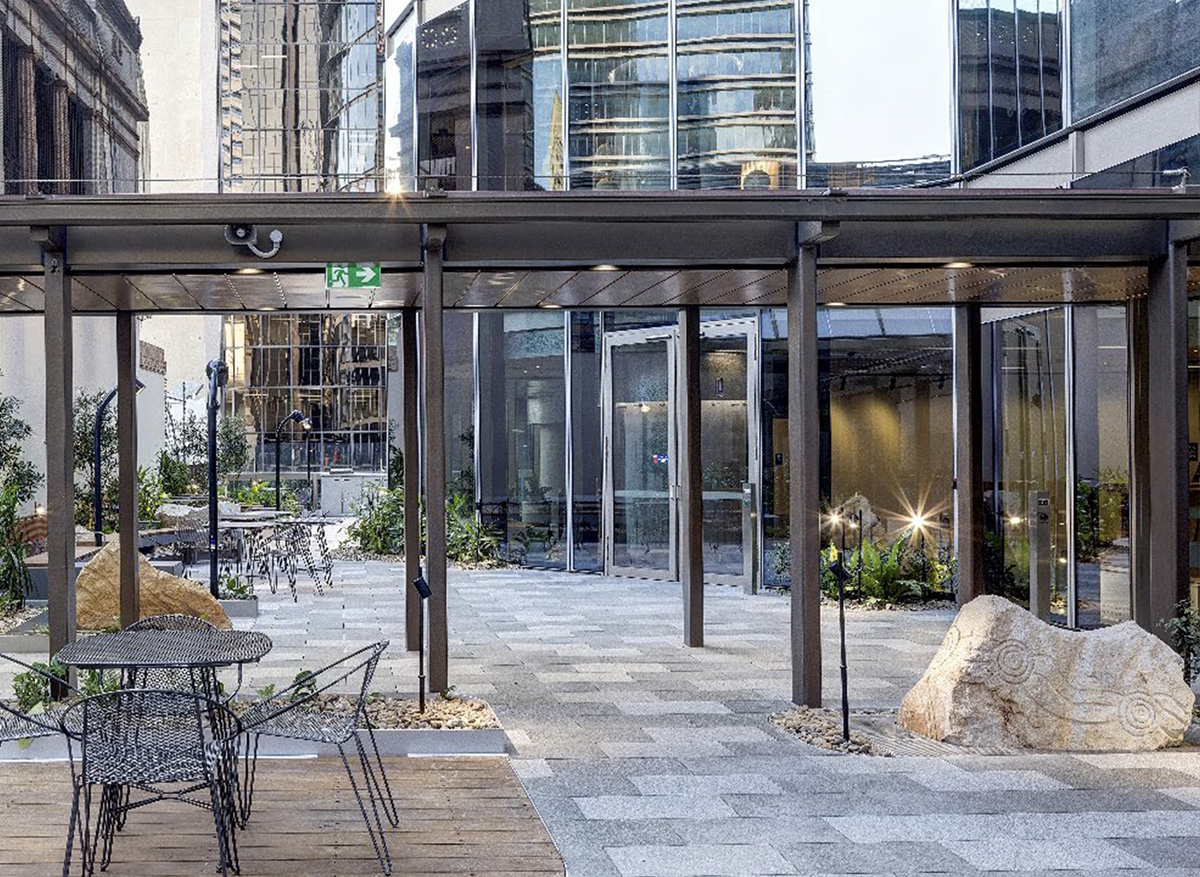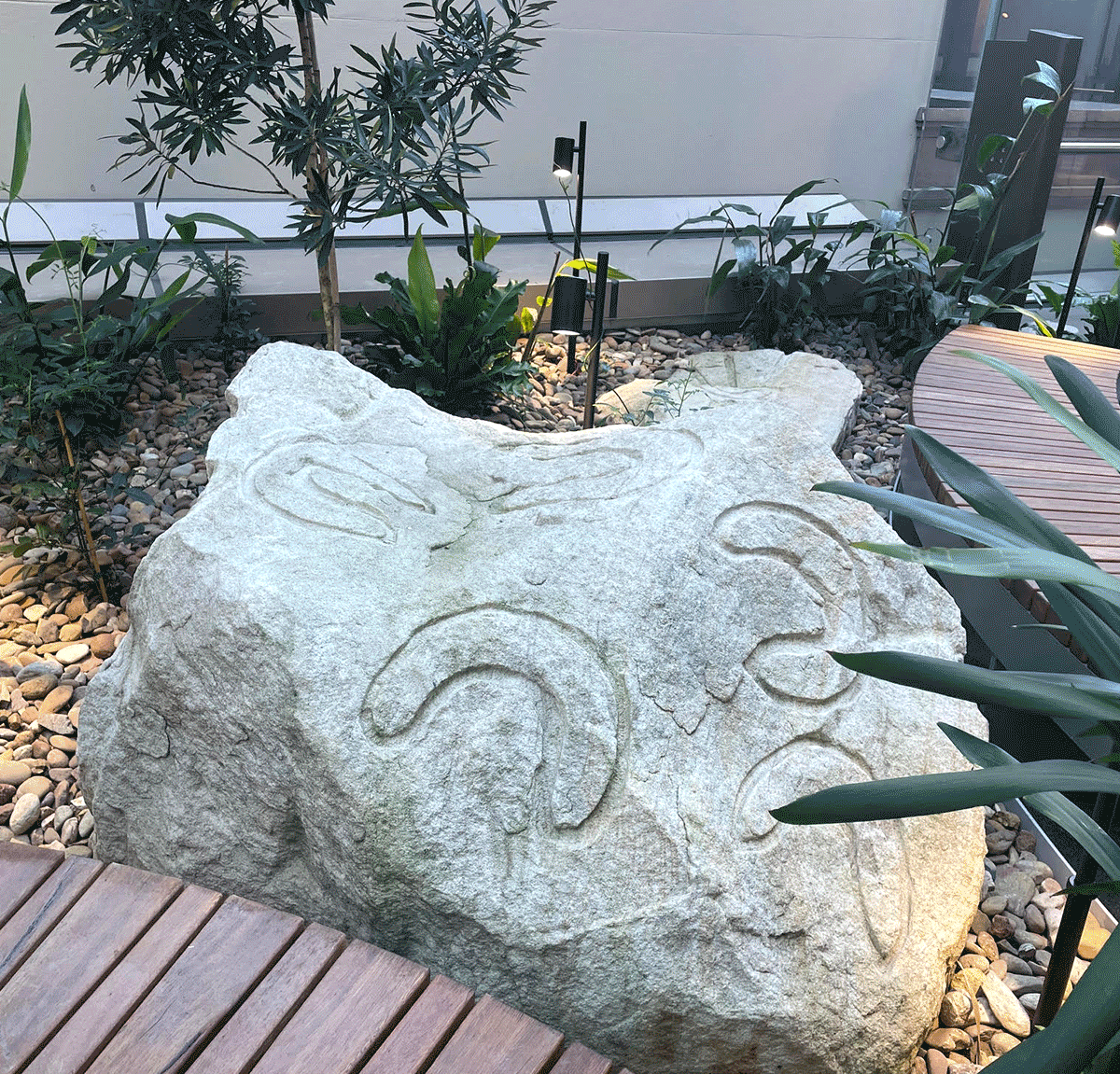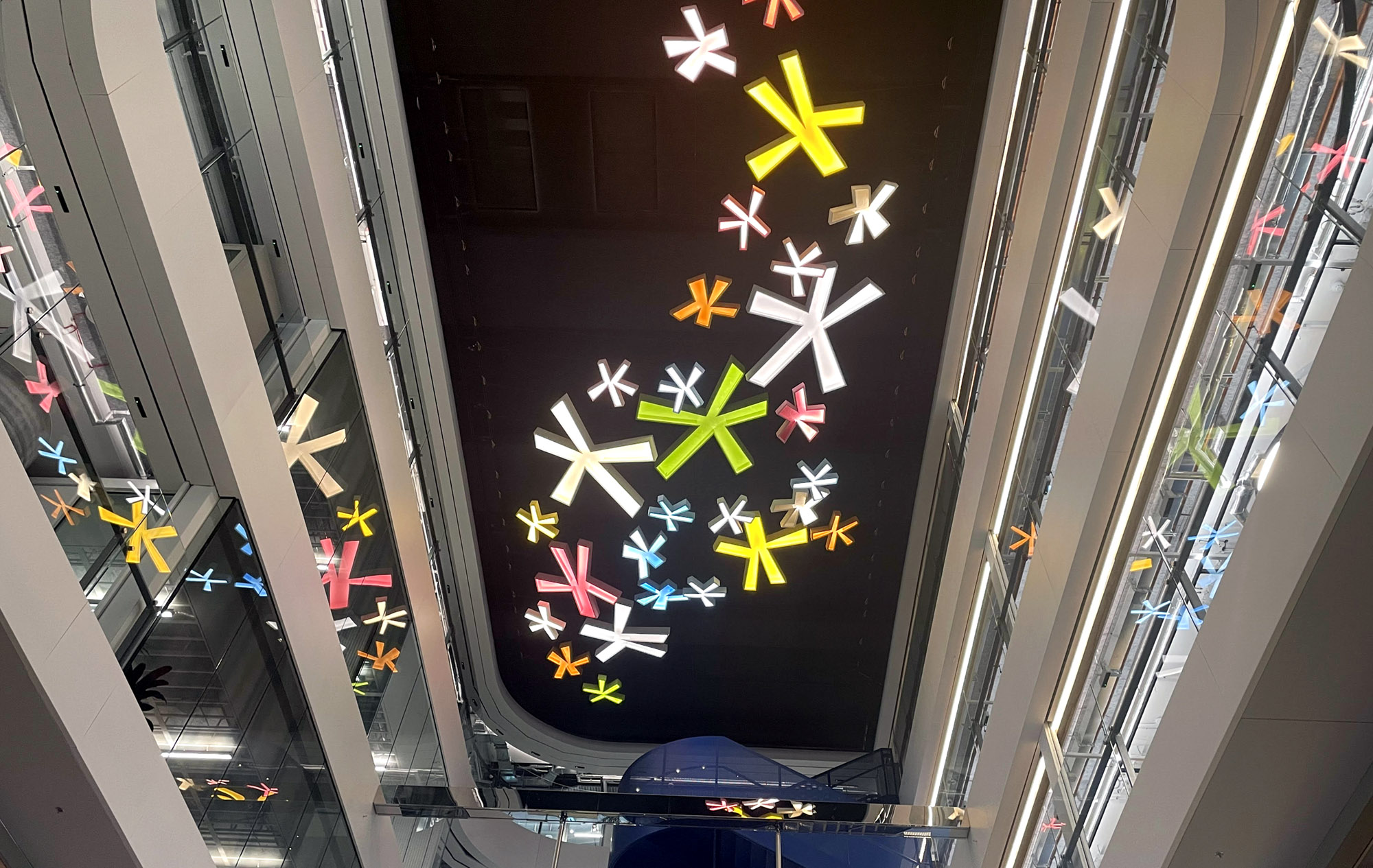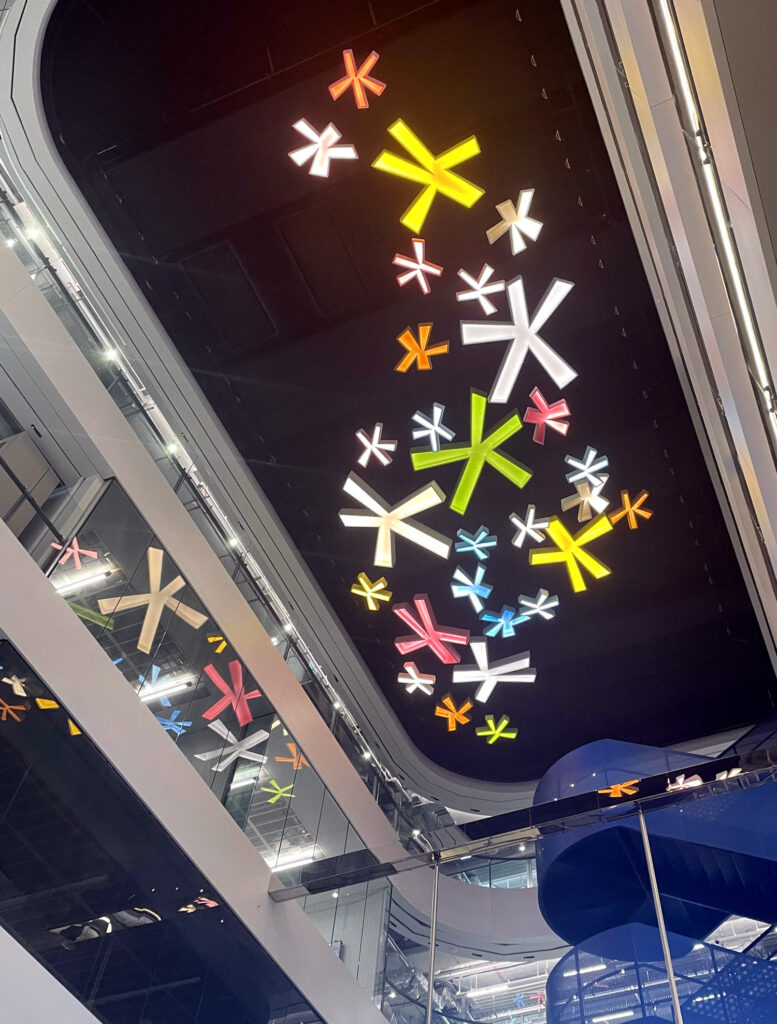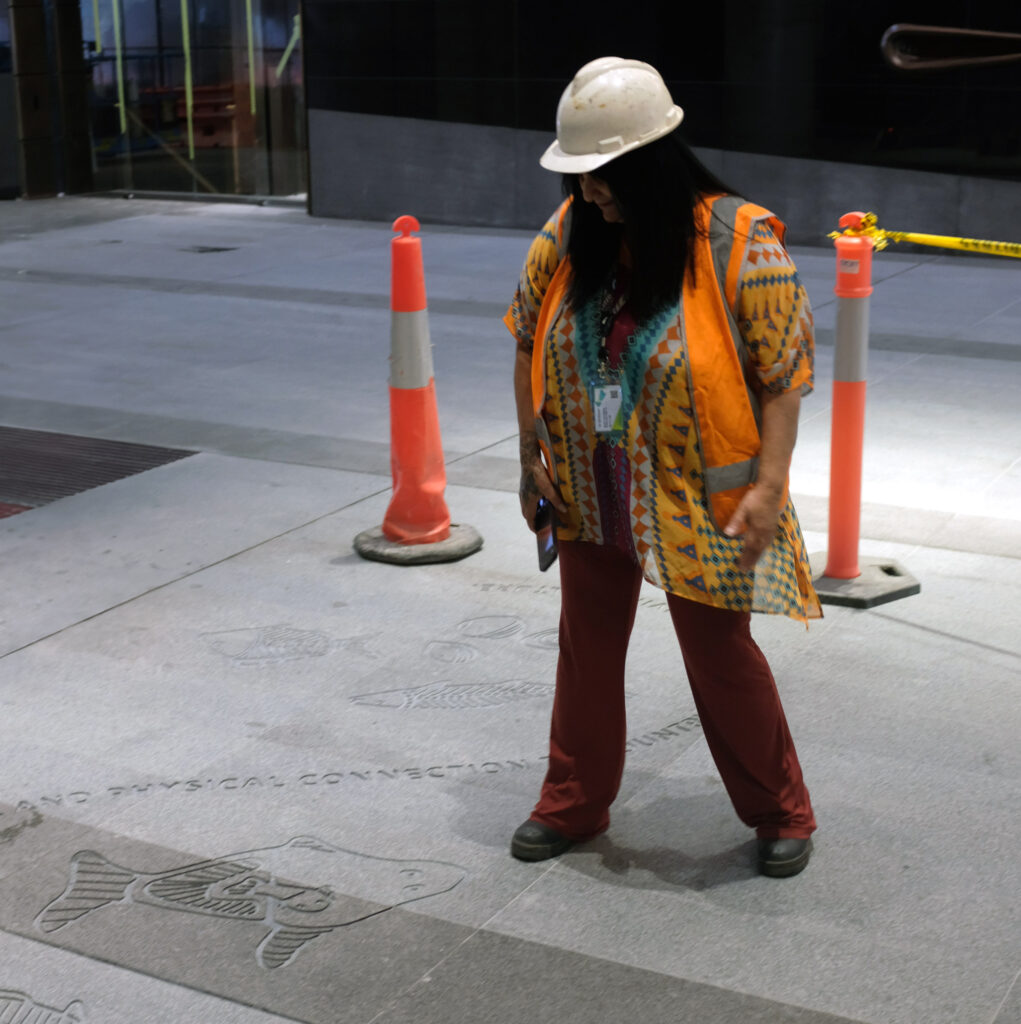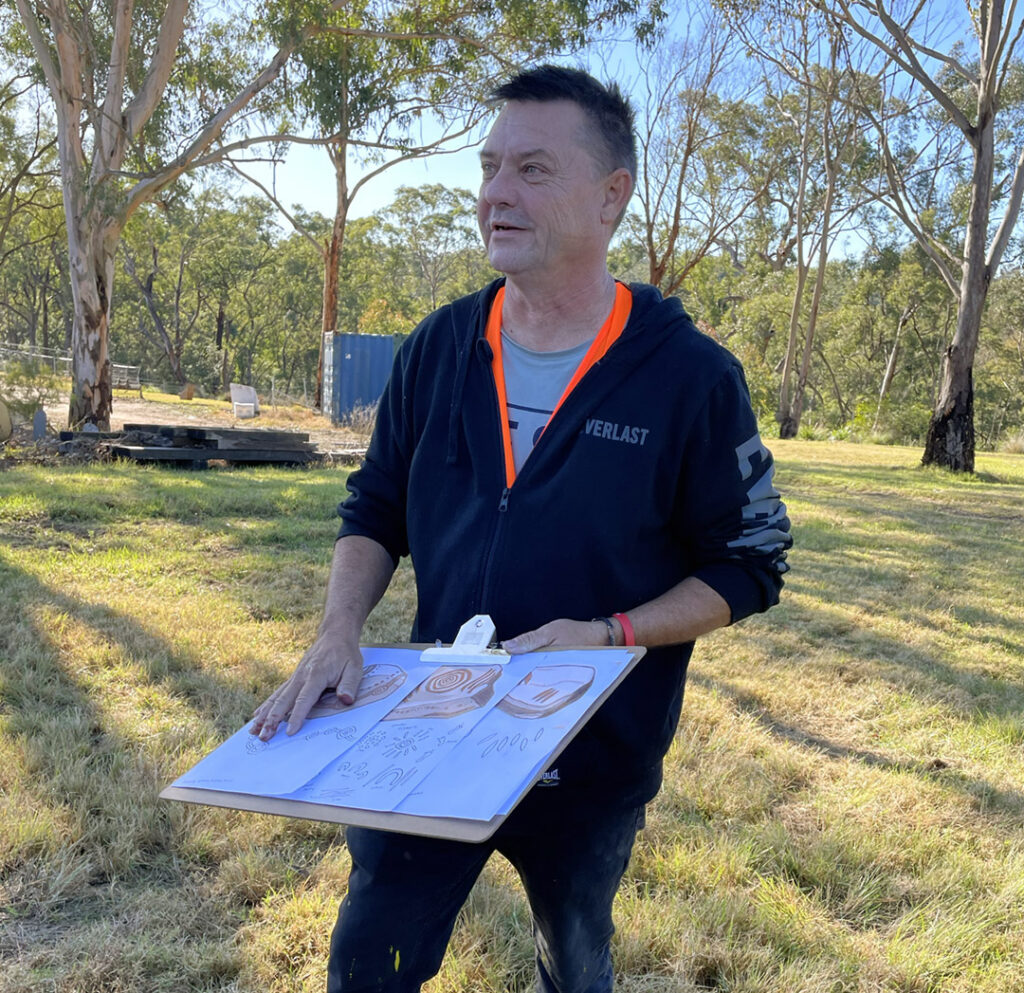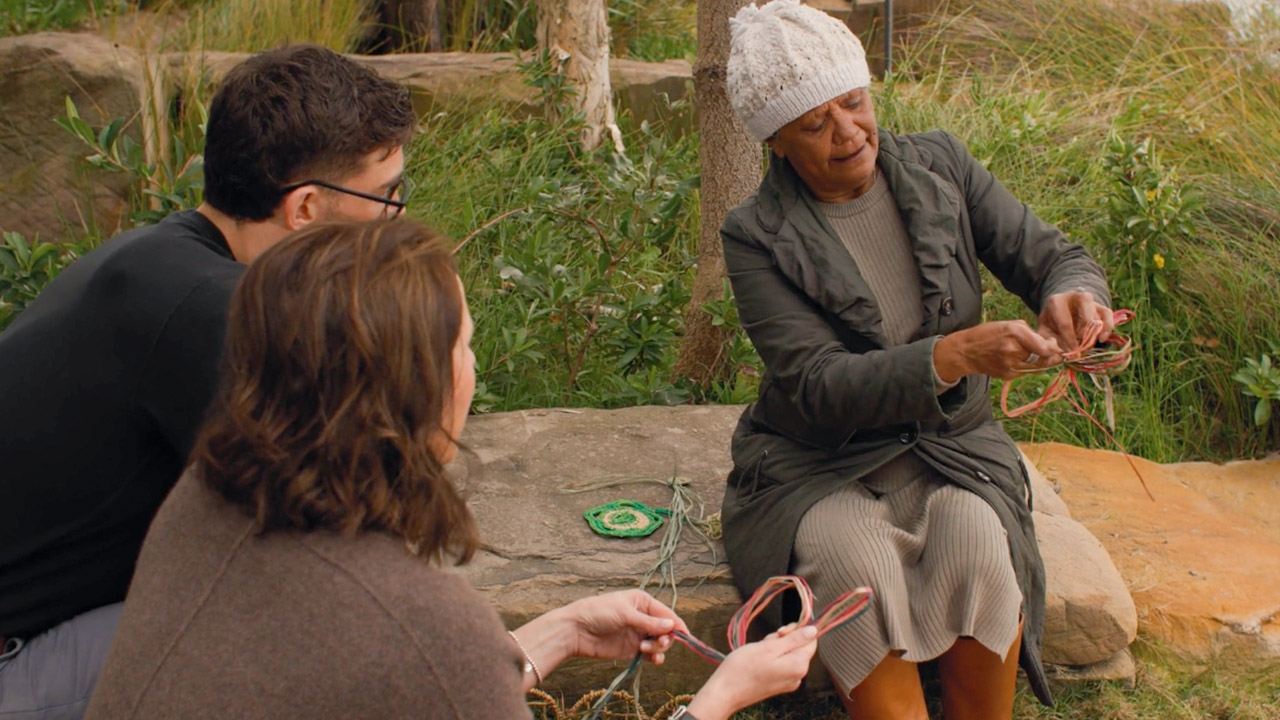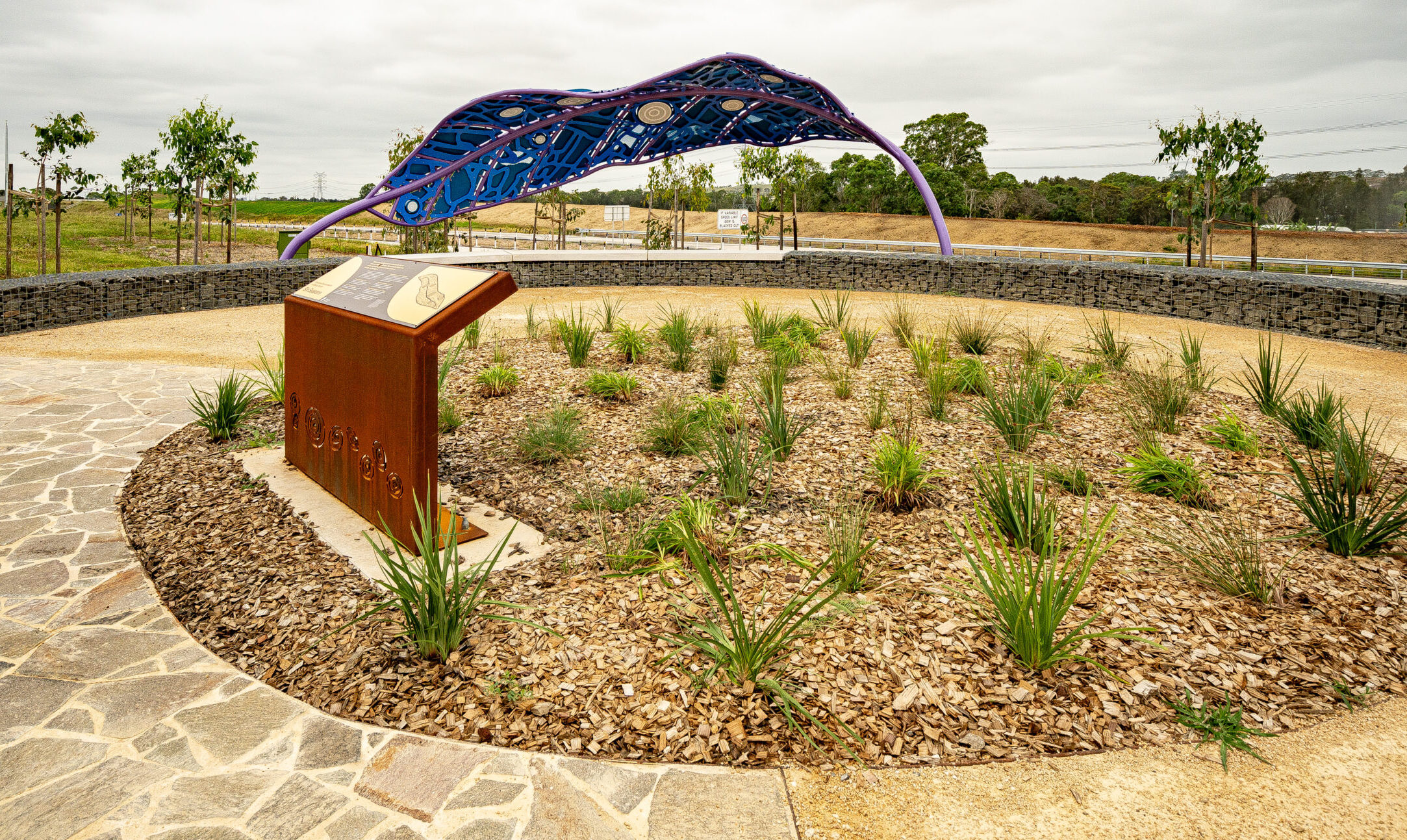Balarinji was engaged by Macquarie Group, the developer of the precinct, to deliver a Designing with Country response for the project. This involved engaging with the Sydney CBD-connected Aboriginal community to co-design a community endorsed narrative and site-specific public art response for the Martin Place site.
Based on the central themes of Connection to Country, Gadigal people, waterways, Sky Country, and language which were co-designed with the local community, three artworks were created in co-design with locally-connected Aboriginal artists and Balarinji, with consultation from Event Engineering, Steensen Varming and Macquarie Group’s design team.
